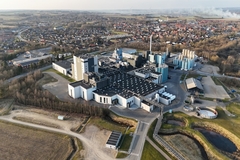
- Industry news
Industry news
- Category news
Category news
- Reports
- Key trends
- Multimedia
- Journal
- Events
- Suppliers
- Home
- Industry news
Industry news
- Category news
Category news
- Reports
- Key trends
- Multimedia
- Events
- Suppliers
Researchers call for critical consensus on processed foods definition

01 Jul 2022 --- Disagreements on how to interpret “processed foods” mean there is no consensus on the nutrition and healthfulness of food, a new study has revealed.
“Sometimes food processing can result in nutrient losses, for example, when grains are milled to refined flour, and recipe formulations can include high amounts of fat, sugar, and/or salt,” Christina Sadler, postgraduate researcher at the University of Surrey and senior manager at the European Food Information Council, tells NutritionInsight.
“However, sometimes processing methods can make some nutrients more bioavailable and thus could have a positive impact.”
The research carried out by the University of Surrey highlighted the ambiguity and confusion surrounding terms such as “processing,” “ultra-processed,” and even “healthy” foods.

A cornucopia of confusion The study found that even among food professionals, there are no clear definitions of “processed foods,” “ultra-processed foods” or “food processing.”
The study found that even among food professionals, there are no clear definitions of “processed foods,” “ultra-processed foods” or “food processing.”
The study concentrated on four main points of contention. First, they looked at broad concepts that require differentiation, such as “processed” and “ultra-processed.”
Second, they honed in disagreements surrounding the extent and amount of processing. Next, they looked at the role of processing within the food system and its risks and benefits. Finally, the researchers focused on the challenges of different perspectives and invested interests in these terms.
The study found that the conceptions of these terms were so vast and different, even among professionals, that it may cause considerable trouble when trying to communicate their meanings to consumers.
“The research aimed to understand professionals’ perspectives on the concept of processed food and identify the agreements and disagreements that exist and the challenges for communicating to the public,” Sadler underscores.
The findings confirmed a lack of consensus on the degree or level of food processing and how this relates to nutrition and the healthfulness of a food, she notes. “Even among professionals, there was confusion about whether or not the term ultra-processed means ‘unhealthy,’ and confusion about the distinction between processing and nutrients.”
A necessary consensus?
Another difficulty highlighted by the study revolves around whether there should be consensus on the meanings of these terms.
One participant explained that the moment universal definitions for what is “processed,” what is “ultra-processed” and what undergoes processing are introduced, their mischievous side would go out looking for the one thing that violated the definition.
They also stated that creating standard definitions may cause consumers and the industry to fixate on the definition rather than the real issue; whether or not the product is healthy.
Still, others stated that all food is “processed” in one way or another, whether that process includes packaging or freezing foods onsite or cooking the food at home.
“Definitions give meaning to words, avoid multiple interpretations, and enable a common understanding,” Sadler continues. “Terms surrounding processed foods are not consistently defined and can mean different things to different people, limiting how these terms can be used effectively in policies or advice.” Some of the study’s participants stated that there must be a consensus on these terms, if only because they are already in use.
Some of the study’s participants stated that there must be a consensus on these terms, if only because they are already in use.
Putting the “ultra” in “ultra-processed”
One final area of deep contention in the study was the term “ultra-processed.”
A recent issue of Great Debates in Nutrition looked at two studies related to this term. One claimed to find evidence linking increased morbidity rates to ultra-processed foods, while another contended that there are too many factors in health outcomes to blame just one. The Surrey study notes that some countries, such as Brazil, India and parts of Belgium, have already started to use the term “ultra-processed” in their dietary guidelines.
The US is also slated to adopt the term in 2025, and the UK has stated that consumption of ultra-processed foods must be slashed in order to stem the rising tide of childhood obesity.
Finding common ground
The study concludes that there must be some agreement among food professionals on the definition of these terms if only to help consumers stay informed and make healthy choices.
As it stands now, a recent study by the British Nutrition Foundation found that most adults in the UK have no idea how to differentiate between processed and ultra-processed foods.
“It is agreed that food processing is part of a complex food system, with benefits and risks for achieving healthy, sustainable and affordable diets,” states Sadler. “Food processing serves important purposes such as lengthening preservation, ensuring food is safe, boosting digestibility, increasing shelf-life, reducing food waste, and improving taste, texture, or color.”
However, Sadler notes that both home and industrial processing can have “undesirable consequences” such as loss of nutrients, the formation of toxic compounds, or the addition of high amounts of fat, sugar, and/or salt.
“Describing foods as good or bad is already a contentious issue. But there needs to be some differentiation between the processing of food products to help inform consumers.”
“This study did not test people’s ability to understand how ‘processed food categories’ influence perceptions of nutritiousness,” comments Sadler.
“It does show that further collaboration is needed to agree on the scope and degree of food processing and how this relates to health impacts and existing nutritional labeling and dietary advice. Emerging research may allow for other aspects, such as processing methods, to be accounted for in the future,” she concludes.
By William Bradford Nichols










